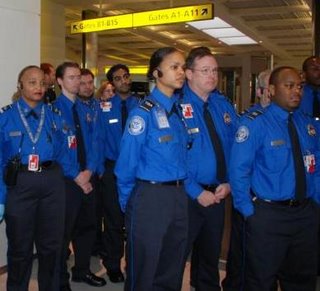3 oz or 3.4 oz? What gives???
 Short answer: 3.4 oz. For more details, read on…
Short answer: 3.4 oz. For more details, read on…OK, here’s the scoop. If the U.S. would have switched to the metrics system in the 70s, this wouldn’t be an issue. How many of you out there had to learn the metric system in school only to never use it…
From a marketing perspective, 3 ounces was easier to remember than 3.4. For the European Union, 100 milliliters was easier to remember than 89. So, behind the scenes, we’ve been allowing up to 3.4 ounces, but it hasn’t been reflected on the web or in signage.
We’ve read your concerns here on the blog, so from now on, we’ll use 3.4 on the blog when talking about liquid limits, and also make changes (as soon as possible) to the TSA web site. I worked with Lynn on this and she has crafted a new response for the contact center to use when communicating with the public. We are also going to send a message to the workforce as a reminder.
Some people have asked why we don’t convert the net weight of the toothpaste to volume since they are different. Good question. The 3.4 container/volume rule was created to make it simple and streamlined for both passengers and our officers. As you could imagine, taking weight into consideration would be a wrench in the spokes. I’m sure the public doesn’t want our officers using scales or conversion charts, etc.
I hope this has helped you better understand the 3.0/3.4 oz. conundrum.
Thanks,
Bob
EoS Blog Team
 Lynn’s husband asked a question similar to this after a recent trip, and we also get this question from people on the blog:
Lynn’s husband asked a question similar to this after a recent trip, and we also get this question from people on the blog:


